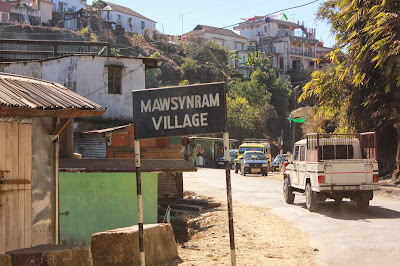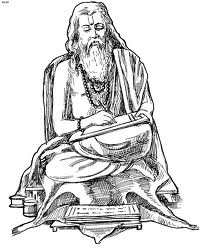* Hem Chandra (Hemu) was born in a Baniya (trader) family in a village in Alwar, Rajasthan in India in 1501. Apart from learning Sanskrit and Hindi, Hemu was educated in Persian and Arabic languages. He was fond of wrestling and horse-riding.
* In the sixteenth century, India was socially and politically unstable because the Mughals and the Afghans were fighting for power. Babur's barbaric invasion of North India in 1526 had resulted in large scale destruction, looting and demolition of Hindu temples in the North.
* Hemu started his career as a supplier of cereals to Sher Shah Suri's army, moving on to more critical supplies like saltpetre (for gunpowder) later. He also developed a cannon foundry and obtained technical assistance for casting cannons, and producing saltpetre from the Portuguese in Goa.
* After Sher Shah Suri's death in 1545, his son Islam Shah became ruler. Islam Shah recognised Hemu's calibre and administrative skills, and made him his personal adviser. He consulted Hemu in matters relating not only to trade and commerce, but also pertaining to statesmanship, diplomacy and general politics. Islam Shah initially appointed Hemu as 'market superintendent' to manage commerce throughout the empire.
* After sometime Hemu rose to become Chief of Intelligence. In 1552 Islam Shah's health deteriorated and he shifted his base from Delhi to Gwalior, a safer place. Hemu was deputed as Governor of Punjab to safeguard the region against the Mughal invasions.
* Islam Shah was succeeded by his 12 year old son Firoz Khan who was killed within three days by Adil Shah Suri. The new king Adil was an indolent pleasure-seeker and a drunkard. Adil Shah appointed Hemu as his prime minister and army chief . After some time, Adil Shah became insane and Hemu became the de facto king.
* At that time the Afghans considered themselves natives of India, while the Mughals, were considered foreigners. Hemu was a native ruler leading a native Afghan army to victory, in the battle after battle. His army consisted of infantry, cavalry, artillery and large elephants. He had created a formidable force which included generals and soldiers from various castes of Hindus and Muslims.
* Hemu launched most of the attacks between 1553-56 from the Gwalior Fort, and won 22 battle victories.
* After the victory of Humayun over Adil Shah's brother Sikander Suri in 1555, the Mughals regained the Punjab, Delhi and Agra after a gap of 15 years. Hemu was in Bengal when Humayun died in 1556. Humayun's death gave Hemu an ideal opportunity to defeat the Mughals. He started a rapid march from Bengal through Bihar, UP and Madhya Pradesh. The Mughal fauzdars abandoned their positions and fled in panic . In Agra, a Mughal stronghold, the commander of Mughal forces Iskander Khan Uzbeg fled after hearing about Hemu's invasion, without a fight.
* After winning Agra, Hemu moved for the final assault on Delhi. Tardi Beg Khan, the governor of Delhi, wrote to Akbar that Hemu had captured Agra and intended to attack Delhi, which could not be defended without reinforcements. Bairam Khan, realising the gravity of the situation, summoned all the Mughal commanders in the vicinity for the defence of Delhi.
* The Mughal army was thus drawn up. Abdullah Uzbeg commanded the Vanguard, Haider Muhammad the right wing, Iskander Beg the left and Tardi Beg himself the centre. In this assault, the Mughals captured 400 elephants and slew 3000 men of the Afghan army. Thinking of victory already gained, several Mughal soldiers dispersed to plunder the enemy and thus the Mughals were left in the field thinly guarded. All this time Hemu had been holding 300 elephants and a force of select horsemen as a reserve in the centre. He promptly seized the opportunity and made a sudden charge upon Tardi Beg with this reserve.
* In the ensuing confusion, the Mughals were defeated. Hemu thus won Delhi after a day's battle on 6 October 1556. Some 3000 soldiers died in this battle. Hemu entered Delhi, victorious under a royal canopy. At Purana Quila, Delhi Hemu was crowned after defeating Akbar's army. Hemu assumed the royal robes and declared himself the Emperor of India under the title of Vikramaditya.
* Thus Hemu became the first Hindu emperor of North India in 350 years.
* On hearing of Hemu's victories and fall of Agra and Delhi, the Mughal army at Kalanaur lost heart and many commanders refused to fight Hemu. Most of his commanders advised Akbar to retreat to Kabul, which would serve better as a strong-hold. However, Bairam Khan, Akbar's guardian and chief strategist, insisted on fighting Hemu in an effort to regain control of Delhi.
* On 5 November 1556, the Mughal army met Hemu's army at the historic battlefield of Panipat. Akbar and Bairam Khan stayed in the rear, eight miles from the battleground, with the instructions to leave India in case of defeat. The Mughal army was led by Ali Kuli Khan, Sikandar Khan and Abdulla Khan Uzbeg.
* Hemu led his army himself into battle, atop an elephant. His left was led by his sister's son General Ramiya and the right by Shadi Khan Kakkar. He was on the verge of victory, when he was wounded in the eye by an arrow and collapsed unconscious. This led to confusion amongst the soldiers, with no supreme commander to coordinate decisions. He fell unconscious was captured and taken to the Mughal camp for execution.
* Bairam Khan asked Akbar to behead Hemu so that he could earn the title of Ghazi. Akbar replied, "He is already dead, if he had any movement or breathing I would have killed him". However, at the insistence of Bairam Khan, Hemu was first struck by Akbar to earn the title of 'Ghazi', then he was beheaded by Bairam Khan. Hemu's head was sent to Kabul in Afghanistan, where it was hanged outside to prove to the Afghans that the great Hindu warrior was dead, while his body was placed in a gibbet outside Purana Quila in Delhi to terrorise the Hindus.
* After Hemu's death, a massacre of Hemu's community and followers was ordered by Bairam Khan. Thousands were beheaded and towers of skulls built with their heads to instill terror among the Hindus.
* Hemu's triumphant march to Delhi can be equated to the campaign of Napoleon. He never saw defeat in the battle throughout his life. And he died in the only battle he lost.
His attempts to drive the Mughals out of India and establish the Hindu Raj was a continuation of various Hindu efforts to regain control from the Muslim invaders.
* Imagine !! If Hemu had taken lessons from Porus's defeat and prepared better for the Battle of Panipat, history of India could have been different.
* Nonetheless, Hemu remains one of the greatest Indian warriors to have resisted the Mughals but sadly in his homeland, for which he laid down his life, he remains an unsung Hero...........

































